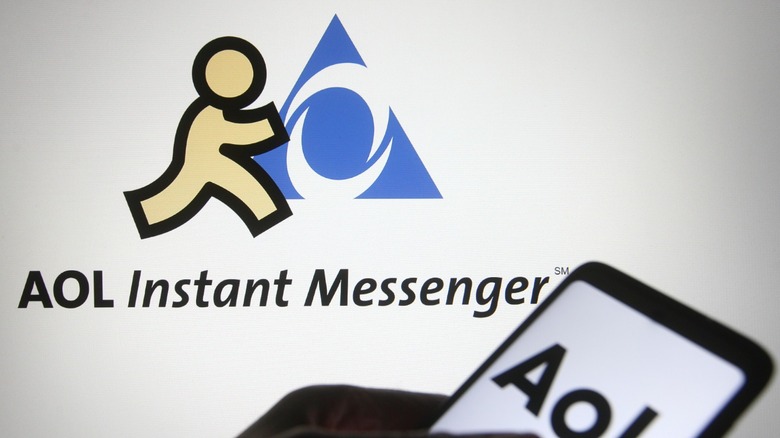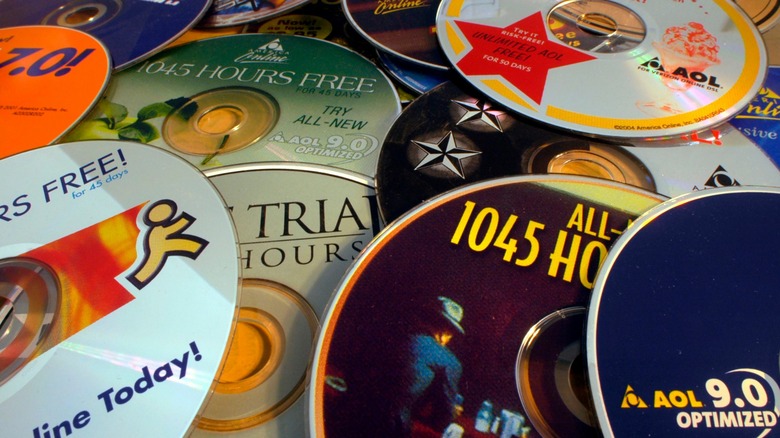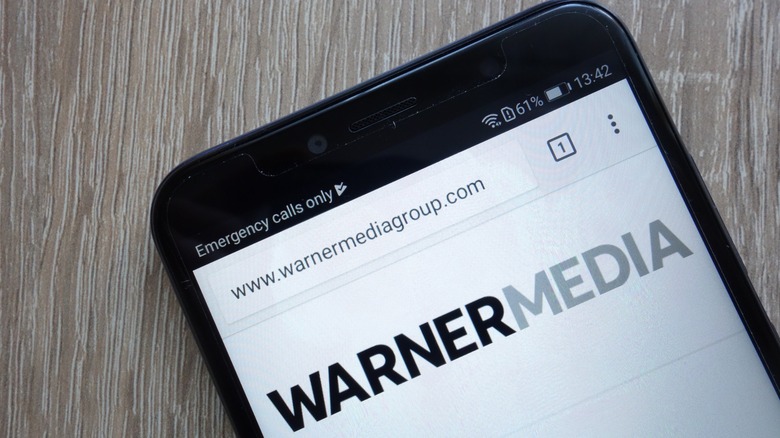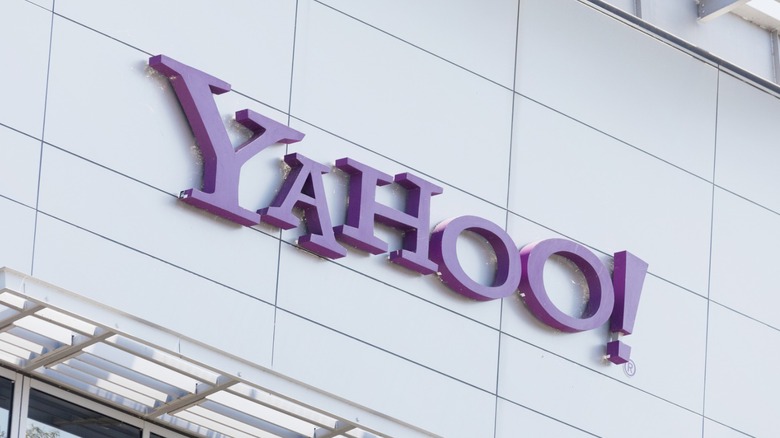Whatever Happened To AOL?
American Online, or AOL, is perhaps one of the most iconic brands of the early internet. AOL was originally established in 1983 and would go on to become a household name. It's no surprise, then, that some would wonder where the company went, considering how well-known it was during the '90s and early 2000s.
Perhaps most remembered for the CDs and floppy disks the company would send in the mail, AOL provided dial-up internet to households by building one of the first widely used user interfaces for the internet ever. Its initial goal was to make the internet easier to use, which helped open it up to a much larger consumer base. In this goal, they were highly successful. In fact, at its peak AOL provided internet to 34 million people worldwide.
Ultimately, the story of AOL as a company is one of an organization that perhaps grew too fast and could not adapt to consumer needs quickly enough to remain a top contender in the industry. While most have fond memories of its instant messaging and e-mail systems, others may wonder whatever happened to AOL.
The rise of AOL was meteoric
Established initially in 1983 as Control Video Corporation, the company didn't initially provide internet but instead enabled Atari 2600 gamers to download video games via a telephone connection. Founded by Steve Case, the company, which had a fairly niche audience at the time, struggled to find more users, leading to a rebrand in 1985 to Quantum Computer Services. Its software, Quantum Link, would be an early iteration of the internet, providing users with instant messaging, news, and e-mail. In 1991, Quantum was rebranded once again, finally settling on America Online.
AOL would go public on March 19, 1992, with an opening stock price of $11.50 per share. In 1993, the company begins an aggressive marketing campaign, physically mailing out floppy discs with the AOL software to thousands of households across the United States. From this time until 2000, AOL would dominate as the top service provider. By 1999, AOL would have over 18 million subscribers.
Time Warner merger may have contributed to AOL's downfall
After the dot-com bubble burst towards the end of the '90s, AOL started to struggle. In 2001, AOL officially merged with Time Warner for $165 billion to become AOL Time Warner — the largest merger in history at that point.
However, the timing couldn't be worse, as many tech companies were beginning to feel the effects of the dot-com crash that began in 2000. Jonathan Miller became the CEO of AOL in 2002, followed by the largest annual net loss of any company in history at $98.7 billion in 2003. By the end of 2003, AOL Time Warner would drop the AOL to become Time Warner, and Steve Case would step down as chairman.
According to Case, cultural disagreements within AOL Time Warner spelled doom for the company. Case believed there were internal conflicts and a lack of belief in future technologies like streaming video. By the end of 2003, AOL Time Warner would officially drop AOL from its name.
However, Jeff Bewkes, Time Warner's CEO from 2008 to 2018, told CNBC that he believed a lack of adaptation to the market may been a cause of the company's demise. At the time, broadband internet was taking over, as many people aimed to rid themselves of their slow dial-up connections for faster speeds. As things like streaming video and music required a faster connection, the platform that made AOL so popular in the first place started to fall out of favor with consumers.
AOL is now Yahoo
In 2015, Verizon officially acquired AOL for $4.4 billion, which was quite a fall from its peak market capitalization of $200 billion in the early 2000s. In 2017, Verizon also purchased Yahoo and combined it with AOL to form Oath, bolstering the user base for both companies.
Projections for profits were strong as the new company was valued at around $10 billion, but actual figures fell far short of the lofty projections. In 2018, Verizon lost confidence in the brand and merged it into the overall Verizon Media umbrella. In 2021, Verizon sold its Verizon Media division to Apollo Global Management for $5 billion, which would eventually go on to become Yahoo. In 2022, Yahoo would post a net revenue of $101 million.
All of this means that AOL is now a part of Yahoo, another household name in the early internet. While far from its heights in the '90s and 2000s, the company more or less exists as a part of a larger media and content company. Regardless of the future, the AOL brand has been through a ton of change and will hopefully continue to adapt to an ever-evolving tech landscape.



